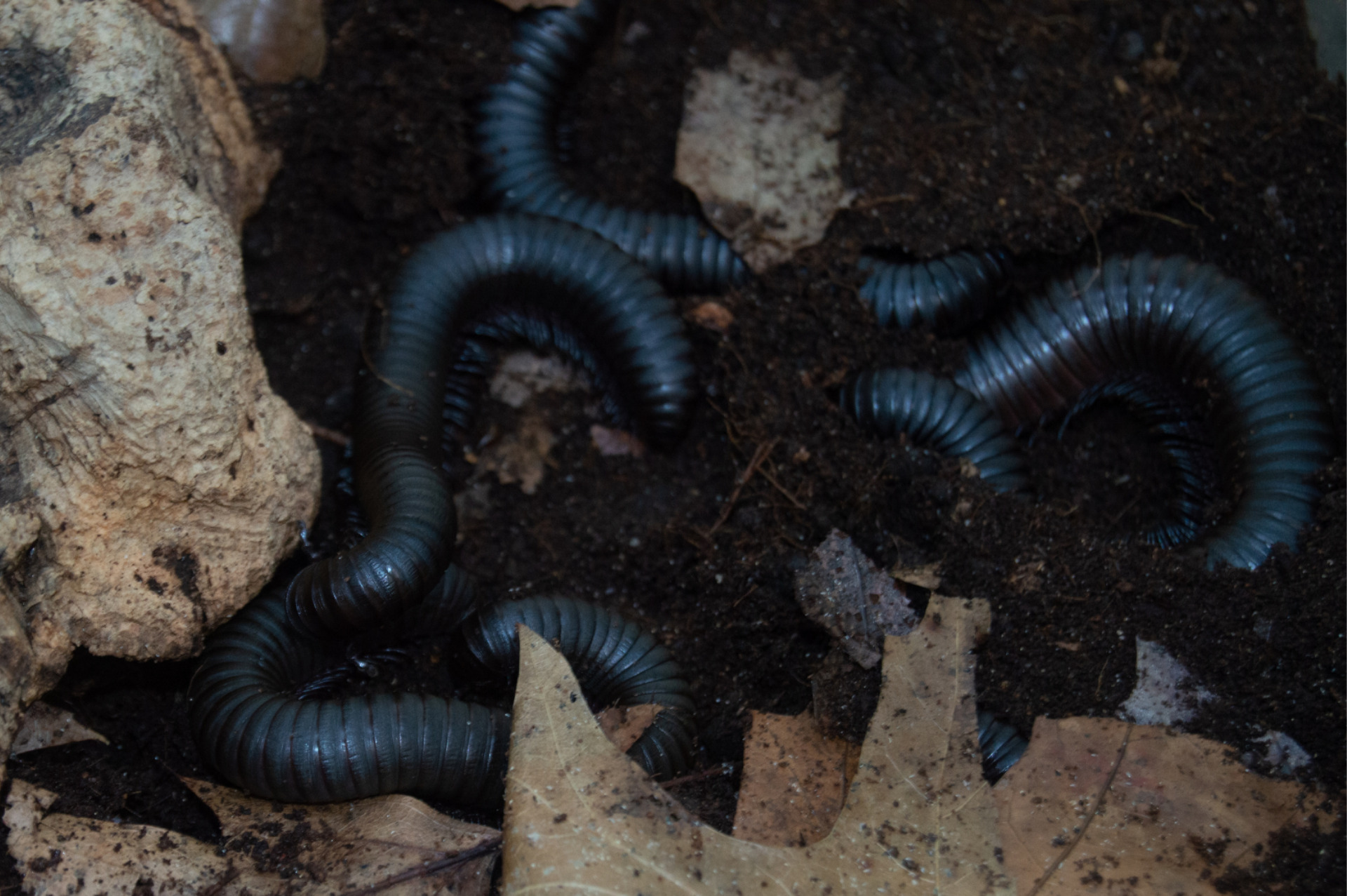Giant African Millipede

Basic Information:
Scientific Name: Archispirostreptus gigas
Habitat: African millipedes can be found in the lowland forests and coastal regions of East Africa.
Diet: African millipedes are detritivores, meaning their diet consists of fresh or rotting fruits, vegetables and leaves. They are the “garbage men” of their habitats.
Size: 0.3 to 1 foot long
Weight: 0.4 to 0.5 pounds
Lifespan: 5 to 7 years in the wild. Up to 10 years in human care.
Distribution Map:
I.U.C.N. Conservation Status:

What does this mean?
Least Concern – a species determined by the International Union for Conservation of Nature (I.U.C.N.) to be pervasive, abundant, and thriving.
About Giant African Millipedes:
Found all across Eastern Africa at low altitudes on the warm, dark, rainforest floor, these millipedes serve an important function in their ecosystem. They are known as detritivores meaning that they feed on dead and decaying organic matter. The excrement they then leave behind enriches the soil with fresh nutrients. This helps to keep their diverse ecosystem as healthy and unique as possible.
Did You Know?!
- Of the thousands of millipede species, giant African milli-pedes are the largest.
- Although “milli-” is the root word for 1,000, millipedes usually only have a few hundred legs.
- Giant African millipedes have no eyes and instead use their antennae to “feel” their way around the world.
- Giant African millipedes breathe through tiny holes on their bodies called spiracles. They cannot close these holes and therefore must avoid pools of water.
- Unlike centipedes, giant African millipedes have weak jaws made for munching on decaying plant matter and cannot bite humans.
- If attacked by a predator, giant African millipedes will coil into a tight ball or secrete a foul-smelling, bitter fluid.
- Giant African millipedes can smell and taste with their body, including their legs.
